Over the last 40 years, the radar technology has experienced many improvements and developments. Because of this, many people have given it great preference for use in level measurement for everyday’s industrial use.
Asides this, there have also been a new development for the non-contacting radar level transmitter devices in the area of choosing the microwave frequency level that the device can transmits.
The devices come in a mid-frequency between 24 and 29 GHz and a low frequency between 6 to 11 GHz, and radar level gauges are already in use so that they may give measurement levels that are reliable and accurate.
Moreover, end-users would benefit greatly when there is a wide range of devices available for selection. However, it is important to choose the radar level measurement instrument that its frequency band matches the application it is used for.
Because every application has a frequency band that suits it and not every frequency bands can suit every application, a user must carefully consider the weaknesses and strengths of radar level transmitters while also considering the different situations that can affect their performance before they use them.
A radar instrument measures the distance between it and a surface through the microwaves that it emits. This calculation is done by calculating the time it takes the pulse to reach the measured surface and the time the pulse reflects back to the instrument.
What determines the wavelength in this case is the frequency; hence, the higher the wavelength the shorter the frequency.
The basic property in any radar level sensor device is the frequency because it has an impact on the performance of measurement in many ways. For example, there would weak signal return in high frequency microwaves channeled via a medium because of its high absorption degree.
A similar example is a music sound that is heard from behind one wall. A low frequency bass can be heard because it can penetrate the wall, whereas, the high frequency treble would be otherwise.
In a similar vein, foam and dust, vapor and condensation are militating conditions of level measurement application because they affect the performance of the high frequency radar; they affect its signal feedback and then its accuracy as a whole.
The radar level gauge absorbs signals and the signal’s strength always reduces whenever it is propagated via a medium. Therefore, high frequency signals always experience high attenuation than mid frequency and low signals.
There is also a significant impact of frequency on a radar antenna’s beam angle and width. This is because a device with a high frequency signal can allow small beam angle with the aid of a small antenna. Whereas, small beam angles have great benefit because they help to prevent any obstruction from occurring in tanks and vessels.
However, with the aid of a large antenna, low frequency radars too can attain small beam-angles. So, a user needs to consider the available sizes fitted in a vessel.
Similarly, there are drawbacks that the narrow beams would experience. Radar level transmitter narrow beam would be completely blocked with any obstruction in a tank, but a wider beam would only suffer a partial block while its measurement could still be reliable.
Radar’s level measurement can be affected by turbulence within the processed liquid. This is because on the surface of the liquid, microwaves hit waves and ripples. Unfortunately, this microwave would disperse and scatter rather than reflect back onto the antenna because of the turbulence. This can make loss to signal strength of about 90% to occur and thus affect the reliability and accuracy of measurements. Therefore, this will also affect short wavelengths in high frequency transmissions.
In the processing industries, there are several radars’ level measurement applications. However, there are challenges present with every application as well. Therefore, users must importantly consider the band or bands of frequency that suit them best in solving their problem. Let us consider the examples below:
Antennas with dirt and contamination;
The direction and strength of radars’ signal can have dirt and contamination, which have build-up on its antenna for some time, affect them. However, mid and low frequencies’ signal are usually unaffected by this because they have low sensitivity to contamination. High frequency signals, on the other hand, is otherwise because any dirt that covers the antenna will absorb much part of the energy and can also divert the beam’s direction as well. The beam’s direction can divert by 1.5 degree just by some little deposit of some irregular thickness that covers some parts of the radar’s antenna. Moreover, narrow-beam angle radar would experience a serious problem that will lead it to lose its signal’s strength level, because its antenna will not directly receive its return echo back. Therefore, the mid and low frequencies technologies are most suitable in this case.
Tanks having vapor and/or condensation;
The noise produced from water droplets can make reflection, from a product’s surface by vapor and condensation, to be obscure. Mid and low frequencies technologies are preferable in this situation because it is only high frequency signals that suffer this. However, the design of antennas for condensation should be taken into account. Some antennas having horizontal and flat surfaces are not usable in this case.
Applications having turbulence; ripples and waves;
The processed liquid in a large tank will have ripples and waves present on its surface. However, this turbulence is an impediment to measurements in high frequency. High frequency devices with short wavelength will have the small movement on its surface scatter signal reflection, thereby leading the loss of the returning signal’s strength. Therefore, mid and low frequencies level instruments will perform better because they emit long wavelengths than high frequency instruments.
Foamy applications;
Accurate measurement will be difficult when the top of the measured liquid has foam covering it, similar to condensation and dirt. This is because foam will have the radar’s signal absorbed. In this case, low frequency instruments are suitable because they give accurate and reliable measurements. Since foam’s products and properties differ, low frequency instrument is suitable for thick and dense ones like latex or molasses, beer etc. Mid frequency instruments, on the other hand, are suitable for light foams. However, high frequency instruments are not suitable for any foamy application.
Tanks having bulk liquid-storage;
Level measurement is sometimes done through still pipes on vessels with bulk storage because they use floating-roof tanks. In this case, it is most preferred to use low frequency radars because of their low sensitivity to build-up on the pipe’s wall, and pipes and slots that are not entirely straight. High frequency radars are not suitable in this situation because of the difficulties they experience.
In addition to this, wind, tank bulging, shade and sunlight always cause some roof movements to occur in tanks having bulk storage. High frequency radars see this as a problem because they are sensitive to tilting due to their beam’s width being narrow. Moreover, a move of their axis from their plumb line in the vertical can make their antennas’ openings to miss reflected signal.
Solids’level measurement;
Application usually determines the best frequency to use in solids’ level measurement. In the cases of mid and low frequencies radars, they can withstand coarse solids, dust and condensation, while high frequency ones would go well with fine powders. For high frequency radars, condensation is a general problem for them. However, when condensation combines with some solids, they can lead to the buildup of some rapid materials. This would then clog the openings of the small nozzle and block the small antennas of radars with high frequency.
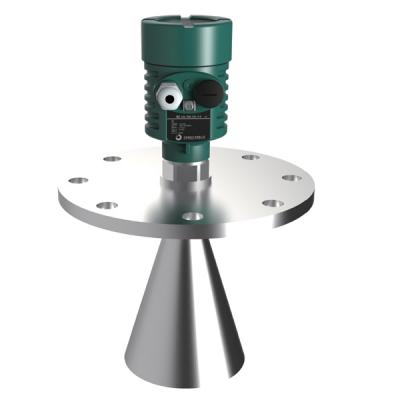 6.8GHz Pulse Radar Level Instrument2017/04/27SKRD50 series radar level transmitter adopts 6.8GHz transmission frequency technology; it is a kind of non-contact and continuous level measurement device. SKRD 50 series radar level transmitters output 4-20mA analog signals;VIEW
6.8GHz Pulse Radar Level Instrument2017/04/27SKRD50 series radar level transmitter adopts 6.8GHz transmission frequency technology; it is a kind of non-contact and continuous level measurement device. SKRD 50 series radar level transmitters output 4-20mA analog signals;VIEW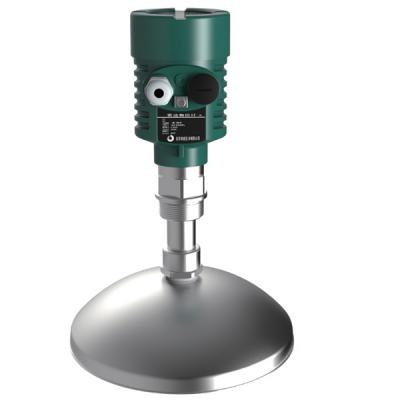 26GHz Pulse Radar Level Instrument2017/04/27SKRD90 series radar level transmitter is designed to be used as non-contact and continuous level measurement instruments of liquids pulps and bulk solids.VIEW
26GHz Pulse Radar Level Instrument2017/04/27SKRD90 series radar level transmitter is designed to be used as non-contact and continuous level measurement instruments of liquids pulps and bulk solids.VIEW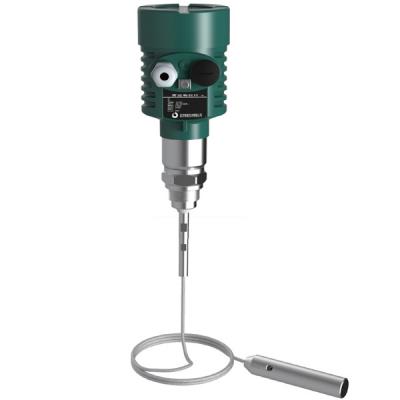 Guided Wave Radar Level Transmitter2017/04/27High frequency microwave pulses travels along the detecting component(steel rope or rod)and reflects when veaching the product surface.The time from emission to reception is proportional to the distan...VIEW
Guided Wave Radar Level Transmitter2017/04/27High frequency microwave pulses travels along the detecting component(steel rope or rod)and reflects when veaching the product surface.The time from emission to reception is proportional to the distan...VIEW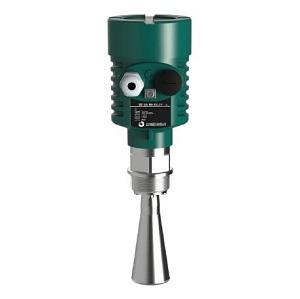 SKRD92 series Radar level transmitter2019/08/29Application: Level measurement in liquids, under certain temperature and pressure, mildly erosive and aggressive liquidsMax. Range: 30mProcess connection: Screw, flangesProcess temperature: -40~250°C...VIEW
SKRD92 series Radar level transmitter2019/08/29Application: Level measurement in liquids, under certain temperature and pressure, mildly erosive and aggressive liquidsMax. Range: 30mProcess connection: Screw, flangesProcess temperature: -40~250°C...VIEW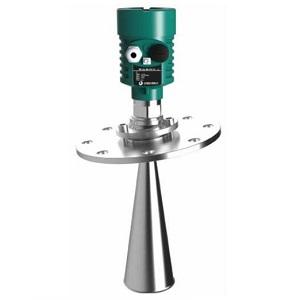 Radar level transmitter for silo corn grains2019/05/14SKRD 92 series radar level instruments are for continuous level measurements,It can measure grains, sand, powder and so on.Radar Level meter technical Specifications:Application: Strong dew/dust/cryst...VIEW
Radar level transmitter for silo corn grains2019/05/14SKRD 92 series radar level instruments are for continuous level measurements,It can measure grains, sand, powder and so on.Radar Level meter technical Specifications:Application: Strong dew/dust/cryst...VIEW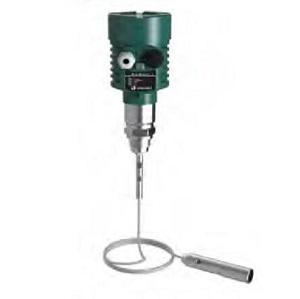 SKRD31 Series Radar level transmitter2019/08/30Application: Liquid, bulk solids level measurementMax level range: 30mProcess connection: Screw, flangesProcess temperature: -40~250°CProcess pressure: -0.1~2.0MpaAccuracy: ±3mmRepeatability: 2mmFre...VIEW
SKRD31 Series Radar level transmitter2019/08/30Application: Liquid, bulk solids level measurementMax level range: 30mProcess connection: Screw, flangesProcess temperature: -40~250°CProcess pressure: -0.1~2.0MpaAccuracy: ±3mmRepeatability: 2mmFre...VIEW